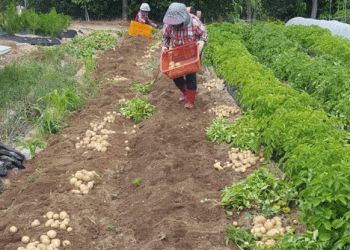Potatoes are a staple food in many countries, and Argentina is no exception. The history of potato cultivation in Argentina dates back centuries, and the crop has played a crucial role in the country’s agriculture and economy.
Potatoes are native to the Andes, and it’s believed that they were first domesticated around 7,000-10,000 years ago by indigenous people in what is now Peru and Bolivia. From there, the potato spread throughout the Andean region and eventually made its way to other parts of South America.
When the Spanish arrived in South America in the 16th century, they encountered the potato and recognized its value as a food source. They brought the potato back to Europe, where it became a popular crop. However, it wasn’t until the 18th century that potatoes were introduced to Argentina.
Potatoes were initially cultivated in Argentina by the indigenous people who had been growing them for centuries. The potato was well-suited to the Andean region, where the soil and climate were similar to the potato’s native habitat. The indigenous people used a technique called “terracing” to grow potatoes on the steep slopes of the Andes.
During the 19th century, European immigrants began arriving in Argentina, and many of them brought with them new farming techniques and technologies. They also brought new potato varieties, which were better suited to the Argentine climate and soil.
The introduction of new varieties and farming techniques led to a significant increase in potato production in Argentina. By the early 20th century, potatoes had become one of the country’s most important crops, and Argentina was one of the world’s largest potato producers.
Today, potato cultivation is still an important part of Argentina’s agriculture. The country is one of the largest potato producers in the world, and potatoes are a staple food for many Argentines. Potatoes are grown in various parts of the country, from the high Andes to the fertile plains of the Pampas.
In recent years, there has been a renewed interest in the indigenous potato varieties that were once grown in Argentina. Many of these varieties are better adapted to the local climate and soil, and they also have unique flavors and textures. Some farmers are now growing these old varieties, both for their own consumption and for sale in local markets.
In conclusion, the history of potato cultivation in Argentina is a fascinating tale of the interaction between indigenous people, European colonizers, and modern farming techniques. Today, the potato remains an important crop in Argentina, and the country’s rich potato heritage continues to be celebrated and explored.








